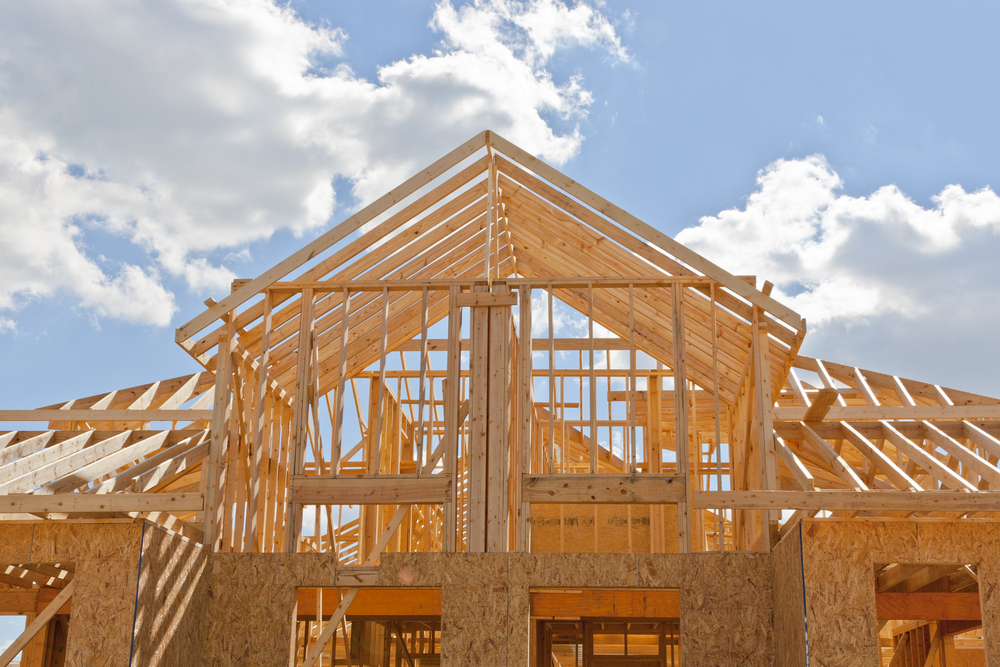Few old-timers can remember searching harder for roofing materials, bar joists or steel pipe. Prices for essential parts like these have risen by at least 50% in a year, and delivery dates are at least as long, if not twice. To survive, some contractors have resorted to hoarding.
Contractors are jockeying to get supplies before competitors. Cash is king. Credit is rare. And price quotes expire in as few as five days.
Reverberations across the supply chain mean contractors are scrambling to have every last nail and screw they need before turning dirt. They’re renting or building warehouses to stockpile supplies. They are putting in “ghost orders,” creating tensions with suppliers who need to protect relationships with loyal customers.
“It’s as bad as any time during COVID,” said Erin Roberts, who leads Ernst & Young’s global construction and engineering practice. “You’ve got all this demand after a brief pause shutting down the supply chain, and it’s just causing havoc.”

Supply shortages, worsened by surging demand, have led to the largest annual spike of input prices to construction since 1987, when data collection began.
On average, input prices for nonresidential construction surged more than 24% over the past year, according to an analysis of the U.S. Bureau of Labor Statistics’ Producer Price Index by the Associated Builders and Contractors.
“Inflation remains hot, hot, hot,” said Anirban Basu, ABC’s chief economist. “There is effectively no relief in sight for the nation’s contractors” this year.
The Associated General Contractors of America spelled out the pain in numbers:
Price increases for construction materials, 12-month change through January 2022
| Construction Product | Change |
|---|---|
| Steel mill products | 112% |
| Steel pipe and tube | 78% |
| Structural metal, non-industrial buildings | 60% |
| Metal bar joists & rebar | 55% |
| Plastic construction products | 35% |
| Aluminum mill shapes | 33% |
| Copper and brass mill shapes | 25% |
| Architectural coatings | 24% |
| Gypsum products | 23% |
| Lumber and plywood | 21% |
| Insulation materials | 19% |
| Asphalt felts and coatings | 18% |
Source: Associated General Contractors of America analysis of January 2022 Bureau of Labor Statistics Producer Price Indexes for processed goods important to construction. Numbers rounded.
Construction pros are playing diplomat, struggling to manage owners’ expectations as bills for materials and storage mount.
“I’d rather be looking at it, than looking for it,” said Peter Tuffo, president of Boston-based Suffolk Construction’s South Region, about his construction supplies. “We’re at the point now where we’re warehousing materials, and getting them wherever we can. If you have to move it twice, you move it twice. But you know what? That cost of moving it twice is much less than having no work to put in place for that month.”
Long lead times
Chris Bailey, senior vice president of integrated solutions at XL Construction, counts the pain in months, ticking off materials in shortest supply on the West Coast.

“We recently learned that the lead time for acquiring open bar joists has pushed into 2023,” said Bailey, from his headquarters in Milpitas, California. “Beyond that, lead times for a wide array of materials that were commonly known to be weeks pre-pandemic have turned into months.”
His most challenging materials and lead times include:
- Roofing and roof insulation (8 – 10 months)
- Steel bar joists (8 – 10 months)
- Metal decking (8 – 10 months)
- Aluminum windows and window curtain walls (6 – 12 months)
- Precast concrete wall panels (6 – 10 months)
- Structural steel (6 – 8 months)
- Metal studs and cold formed metal framing (2 – 4 months).
Roofing materials are as scarce as hen’s teeth.
Granger Hassmann, vice president of preconstruction at Minneapolis-based Adolfson & Peterson Construction, put it bluntly: “The entire roofing industry is just an absolute mess right now. It’s ridiculous. The manufacturers aren’t even providing competitive pricing. They won’t give you a bid until you actually order it.”

Ethylene propylene diene terpolymerany (EPDM) rubber roofing membranes, widely used on commercial buildings, are nearly impossible to find.
“Everything is becoming more difficult to source, including any products with the word ‘poly’ in them,” said Paul Moffat, vice president of preconstruction at Detroit-based contractor Barton Malow.
Where’s all the warehouse space?
Firms foraging for materials and trying to store them has led to another shortage.
“The market for warehouse space is so tight around the country, you almost have to sign a lease before or during construction to secure it … We’ve been reaching out to empty big-box retail centers to help bridge the gap,” said Amy Rodbell, a broker in the Atlanta office of commercial real estate consultancy Newmark.
To survive, some contractors are building their own warehouses.
“They’re erecting temporary structures on or near jobsites to house materials before they’re needed. That can remove most or all of the attempted cost savings by pre-purchasing,” said Jacob MacIntyre, director of the customer acceleration group at Quickbase, who focuses on the construction market.
That’s flipped the construction industry’s lean business model upside-down.
“Everybody realized that instead of just in time, we needed just in case,” said Ernst & Young’s Roberts.
‘Ghost’-order busters
Jake Romano, a manager at a residential plumbing contractor outside Toronto, Canada, struggles to get everything from toilets to PVC piping.
“Some of our competitors have bought up nearly every toilet they can get their hands on. These guys have their warehouses filled to the brim,” Romano said.
Manufacturers are reacting by tethering sales.
“That’s the new world way of saying I can’t get you everything you want,” said Chris Fitzgerald, global vice president at Downers Grove, Illinois-based chemical and sealants giant Univar Solutions, which supplies some of those hard-to-get “poly” products. If a product is limited, he might only give clients 70% of last year’s order.
“Manufacturers are pushing back and asking for project-specific information so they don’t have a bunch of ghost orders down the line.”
President, Miller Construction Company
Further down the supply chain, mid-level suppliers are policing against “ghost orders,” when contractors put out multiple bids for a single product.
Manufacturers “are pushing back and asking for project-specific information … so they don’t have a bunch of ghost orders down the line,” said Brian Sudduth, president at Fort Lauderdale, Florida-based Miller Construction Co.
The solution? Starting sooner, working longer
In response, contractors kick off the preconstruction phase of their projects as much as 18 months ahead of groundbreaking, almost a year earlier than normal.

“We’re telling our owners that once we start, we can still build their job in 11 months, but we can’t start it right away, because after a couple months on site, we’d have to stop and wait for steel,” said A&P’s Hassmann.
Now, those months are spent gathering supplies.
“You’re spending the first two months ordering to get material there so it’s on site, or in a bonded warehouse, or in storage bins,” Hassmann said. “Wherever you can put it just to make sure you’ve got it and it’s captured.”
When the current supply chain snarls will end is anyone’s guess.
ABC’s Basu said, “It may seem naive given current data readings, but the expectation remains that, at some point later this year, construction materials prices will moderate.”
But others caution that as one shortage lessens, another gets worse. They see little relief before the end of the year or next.
Barton Malow’s Moffat is resigned: “Unfortunately, it’s just gotten progressively worse. It seems like every month, there’s some new material that has a problem.”




Comment (0)